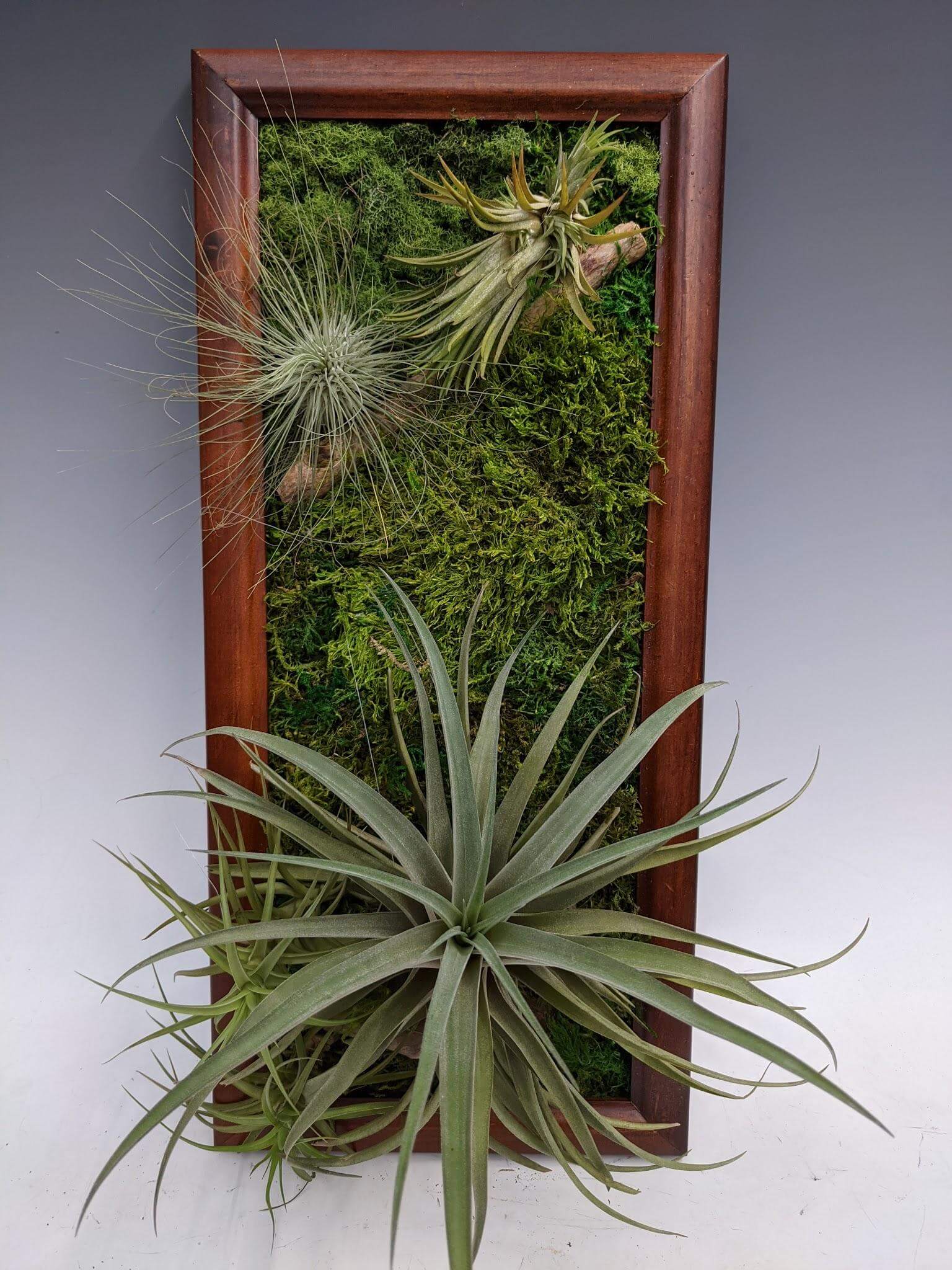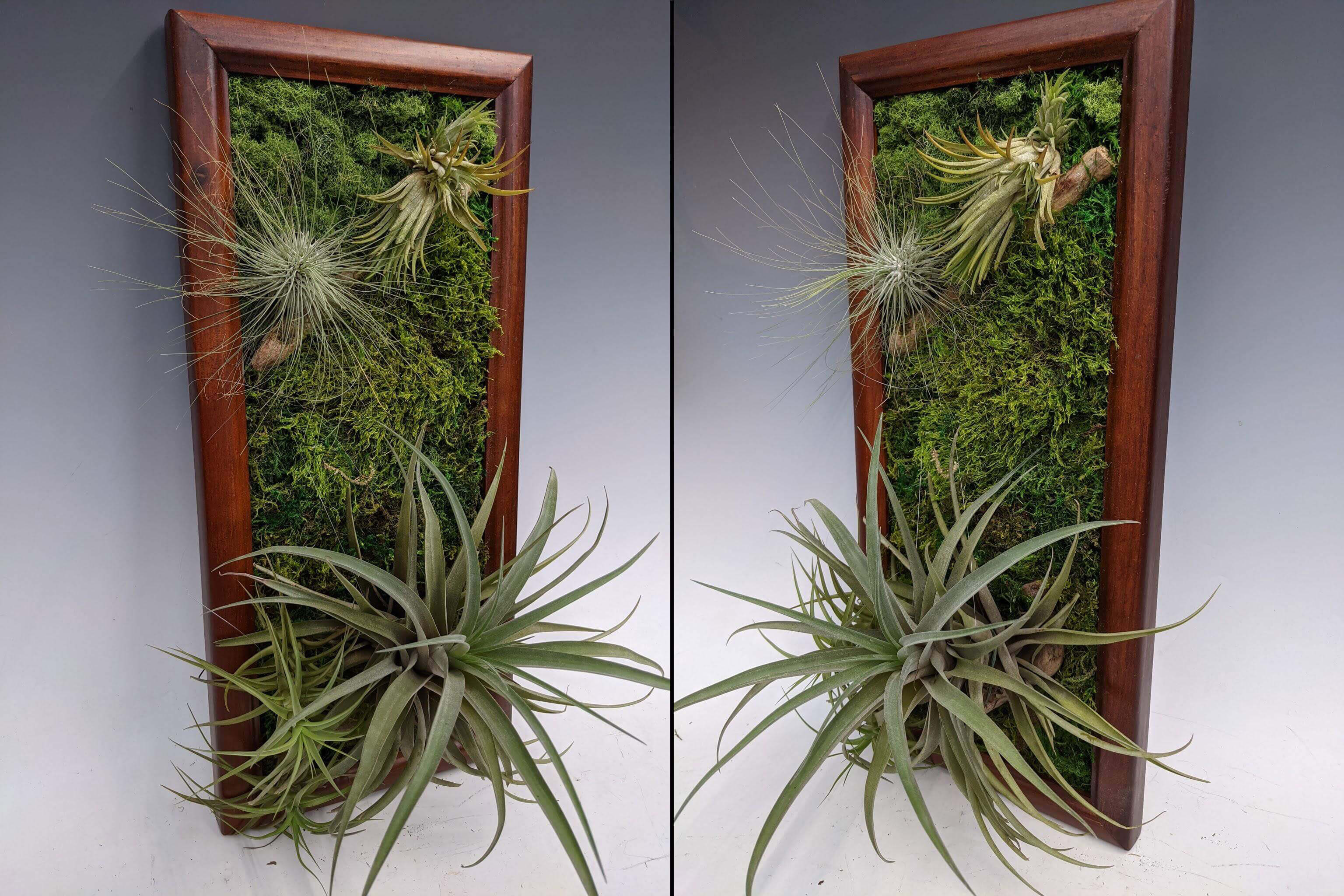Don’t Panic – Something is Growing on Your Wall!
Posted by Adam Kostanecki on Jan 24th 2021
Take a deep breath - *whew* - we’re not talking about mold today!
One of the best aspects of growing plants as a hobby is the wide variety of ways in which they can be displayed. In my last blog, I wrote to you about housing cool-temperature orchids in terrariums. Today, we’re thinking outside-of-the-pot with living wall frames!
This blog has an accompanying video tutorial:
If you’ve seen a living wall frame before, you already know the benefits that these unique installations provide – they are both works of art and windows into nature. For this reason, they are a guaranteed eye-catcher in any room of the home. Personally, my favorite living wall frames are designed such that the plants emerge beyond the frame, reaching out into the space around them. Not only that, but living wall frames (like the one pictured below) offer changing scenes depending on the angle you view them from.

This past week, I created an Orchids Limited one-piece 10" x 22" living wall frame, in which I included four Tillandsia species: T. plumosa, T. ionantha, T. bergeri and T. latifolia. Using an asymmetrical design, T. plumosa and T. ionantha are perched at an angle over a straight branch in the upper half. Meanwhile, the base of the frame pops with a large T. latifolia specimen emerging outwards, with T. bergeri nestled over a branch in the corner. (To see me make a living wall frame with an orchid, check out the video tutorial above).
What does the process of constructing a living wall frame look like? That depends on the types of plants you’re interested in mounting. Plants that survive as epiphytes (plants that grow on other plants non-parasitically) will fair best in the design I outline below. Otherwise, plants that require lots of moisture will need a deep frame with additional fittings to house the media they require for survival. We’ll leave that design for another day.
So how did I build my living wall frame? Starting with an empty picture frame, I attached a wire mesh to the back in order to give the plants something to hold onto. Next, I tied in specimen plants and decorative branches using wire and fishing line. This step takes a bit of finesse, as you want to offer enough support for the plants without cutting into them. After that, I tied a corrugated plastic board to the wire mesh from the back. The board acts as an insulating barrier between the damp plant layer and the wall. Last but not least, I filled in the remaining spaces by gluing decorative sheet moss and preserved lichen. A word of advice: I recommend wearing gloves for this last step since the decorations sit best when pressed into place. Place the final piece of moss and voila – we have ourselves a living wall frame!

This one-piece installment was a joy to make and write about, and perhaps even inspired you to go ahead and get crafty with your own homemade living wall frame! If the one I handmade myself is of particular interest to you, it can be purchased here. If you would rather create your own home project, check out the assortment of Tillandsia we’re currently offering!
Tillandsia bergeri - very fast growing with bright green leaves. You won’t be disappointed with what this grows into!

Tillandsia butzii - the bulbous base on these plants are decorated with a purple tiger-print pattern!

Tillandsia incarnata - long, delicate leaves with a shimmering, silver color!

Tillandsia latifolia - large plants, +12" in length and +8" in diameter!

Tillandsia tenuifolia var. vaginata - easy to grow with stiff, bristly leaves!

Cheers!
Adam

